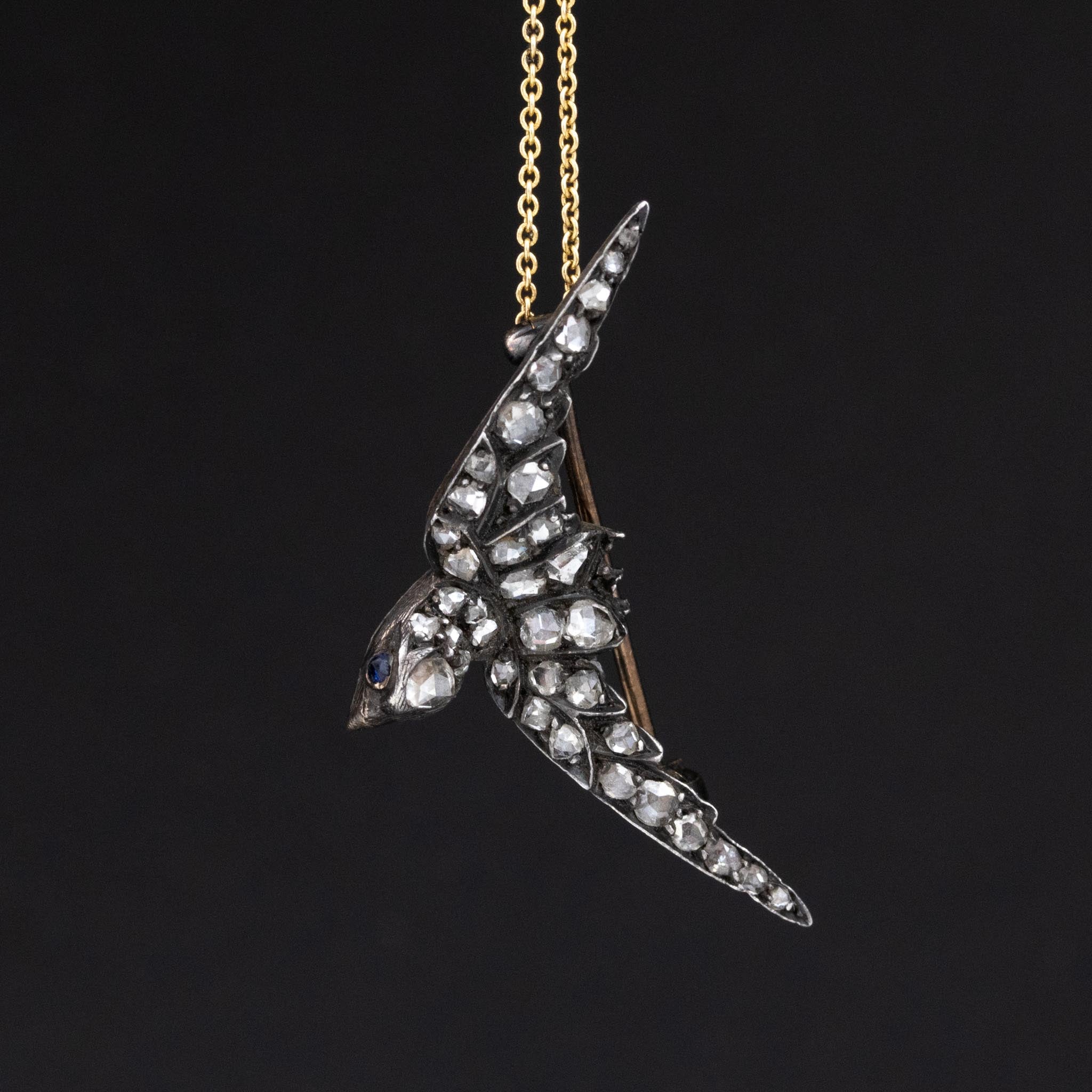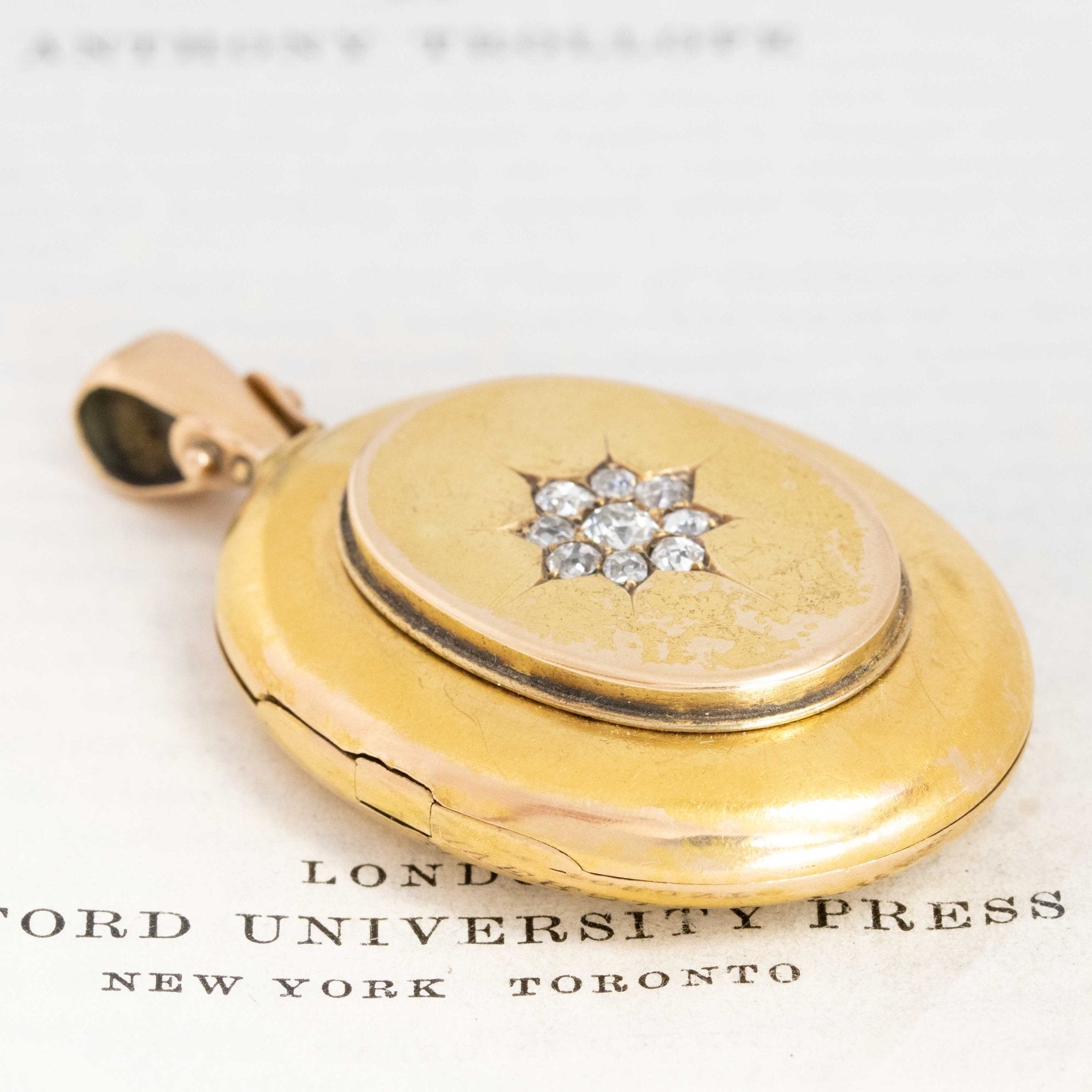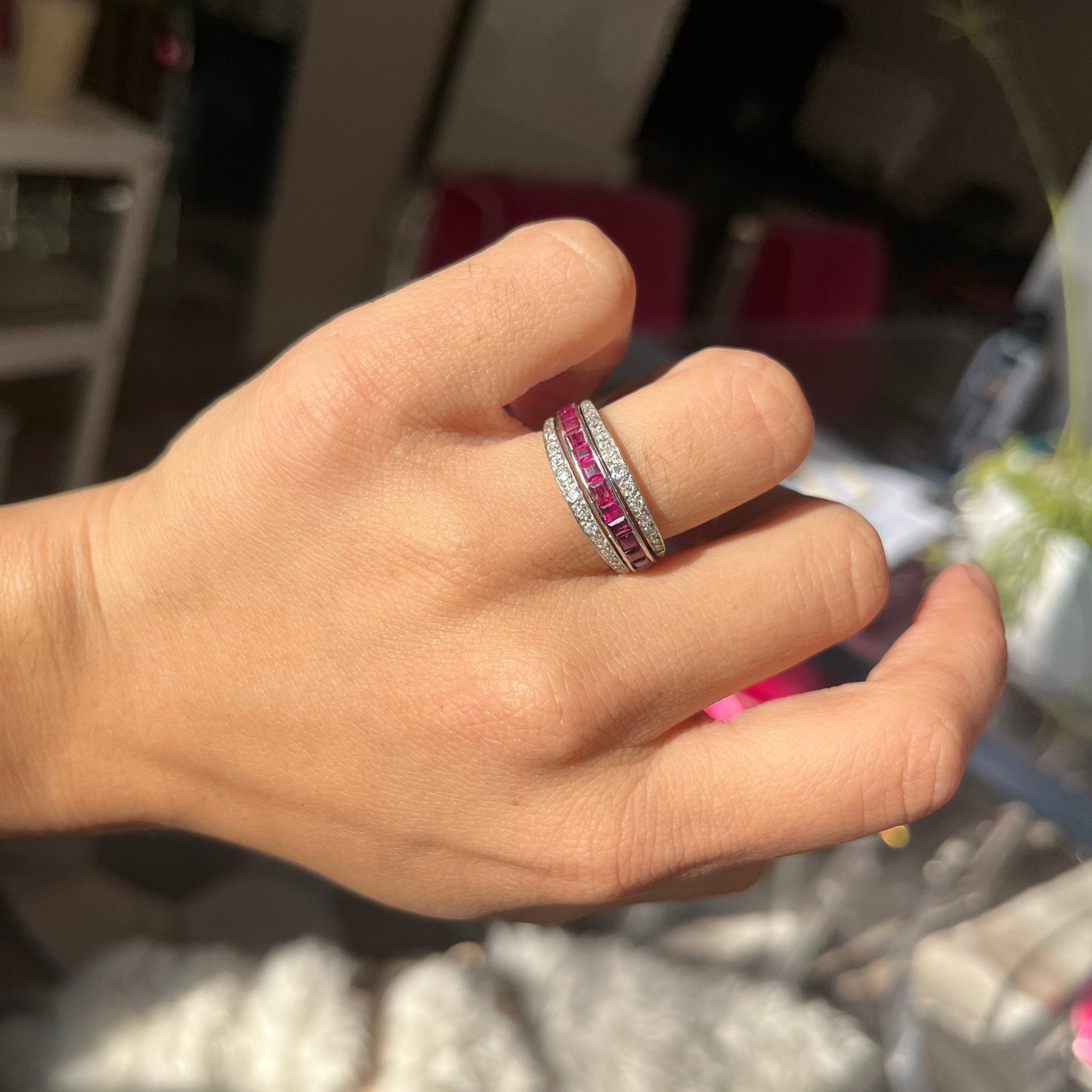Eras and Styles of Antique & Vintage Jewelry
Let’s take a journey through the different eras of vintage and antique jewelry, uncovering the unique features that define each period. You may find yourself being drawn to a particular era, or, best case scenario (in my book anyway), all of them!
Timeline of Historic Jewelry Eras
Jewelry has been a symbol of beauty, status, and personal expression for centuries. Vintage and antique jewelry, in particular, carries the charm of history and the artistry of bygone eras. Each period has its own distinct styles and characteristics, reflecting the cultural and artistic movements of the time.
Georgian Era (1714-1837)
First up is the Georgian era, named after the four King Georges of England, is known for its intricate and handcrafted jewelry. Pieces from this period are rare and highly valued for their exquisite craftsmanship.
Characteristics:
- Use of high karat gold and silver
- Intricate metalwork with repoussé and cannetille techniques
- Nature-inspired designs like flowers, leaves, and birds
- Precious gemstones such as diamonds, rubies, and emeralds, often set in closed-back settings
-
Rare Georgian-era Rosary Diamond Ring


Rare Georgian-era Rosary Diamond Ring
- Regular price
- $4,800.00 USD
- Sale price
- $4,800.00 USD
- Regular price
-
-
.56ctw Georgian Swallow Diamond Brooch


.56ctw Georgian Swallow Diamond Brooch
- Regular price
- $975.00 USD
- Sale price
- $975.00 USD
- Regular price
-
Victorian Era (1837-1901)
The Victorian era, spanning the reign of Queen Victoria, is divided into three distinct periods: Early Victorian (Romantic), Middle Victorian (Grand), and Late Victorian (Aesthetic).
Early Victorian (Romantic):
- Romantic and sentimental motifs like animals, hearts, flowers, and bows
- Use of gold and colorful gemstones, including garnets and turquoise
-
Vendor:Product vendor
Name for your product
- Regular price
- $19.99 USD
- Sale price
- $19.99 USD
- Regular price
-
-
Vendor:Product vendor
Name for your product
- Regular price
- $19.99 USD
- Sale price
- $19.99 USD
- Regular price
-
-
Vendor:Product vendor
Name for your product
- Regular price
- $19.99 USD
- Sale price
- $19.99 USD
- Regular price
-
-
Vendor:Product vendor
Name for your product
- Regular price
- $19.99 USD
- Sale price
- $19.99 USD
- Regular price
-
Middle Victorian (Grand):
- Inspired by the mourning of Prince Albert, dark and somber jewelry became popular.
- Use of jet, onyx, and deep-colored gemstones.
- Belt and buckle jewelry was a way for Victorians to honor their passed loved ones. Considered “remembrance” jewelry, the bond between the buckle and the belt symbolizes the strength of connection and loyalty to loved ones that are being mourned.
-
Victorian Old Mine Cut Diamond & Enamel Band


Victorian Old Mine Cut Diamond & Enamel Band
- Regular price
- $1,950.00 USD
- Sale price
- $1,950.00 USD
- Regular price
-
Late Victorian (Aesthetic):
- A shift towards more whimsical and artistic designs
- Use of brighter gemstones and the introduction of Japanese influences
- Chateleins and coin purses – jewelry for function
- The snake symbol became popular in the mid to late Victorian era, as the Queen herself favored serpentine jewelry, which came to represent wisdom and eternal love.
-
1.60ctw Victorian Ruby & Diamond Earrings


1.60ctw Victorian Ruby & Diamond Earrings
- Regular price
- $4,800.00 USD
- Sale price
- $4,800.00 USD
- Regular price
-
Etruscan Revival:
This style of jewelry was inspired by ancient Etruscan jewelry discovered by archaeologists during the Victorian era. The gold uncovered in the Etruscan tombs fascinated the Victorian public and inspired the revival of the style:
- Intricate gold work
- Use of ancient techniques such as granulation and filigree
- Motifs like rosettes, palmettes, and mythological creatures
-
1.03ctw Antique Etruscan Revival Diamond Festoon Necklace


1.03ctw Antique Etruscan Revival Diamond Festoon Necklace
- Regular price
- $3,900.00 USD
- Sale price
- $3,900.00 USD
- Regular price
-
-
Vintage Ancient Enamel Basin Charm


Vintage Ancient Enamel Basin Charm
- Regular price
- $1,050.00 USD
- Sale price
- $1,050.00 USD
- Regular price
-
Edwardian Era (1901-1910)
The Edwardian era, named after King Edward VII, is known for its elegance and sophistication. Jewelry from this period is characterized by delicate and intricate designs.
Characteristics:
- Extensive use of platinum and diamonds
- Intricate metalwork such as filigree, milgraining, and lace-like patterns
- Motifs included garlands, bows, and scrolls
- Pearls added to the delicate and refined look of Edwardian jewelry
-
1.74ctw Edwardian-era Old European Cut Diamond Solitaire, GIA K VS1


1.74ctw Edwardian-era Old European Cut Diamond Solitaire, GIA K VS1
- Regular price
- $15,800.00 USD
- Sale price
- $15,800.00 USD
- Regular price
-
-
.50ctw Edwardian Diamond & Pearl Drop Earrings


.50ctw Edwardian Diamond & Pearl Drop Earrings
- Regular price
- $2,800.00 USD
- Sale price
- $2,800.00 USD
- Regular price
-
Art Nouveau (1890-1910)
The Art Nouveau movement, as well as the Arts and Crafts movement, was a reaction against the industrial revolution, emphasizing handcrafted artistry and natural forms. At this time, jewelry become more mass produced and consumer oriented.
Characteristics:
- Flowing, organic lines and curves
- Nature-inspired motifs like flowers, butterflies, and female forms
- Use of enamel, as well as semi-precious stones and opals
- Gold, with a focus on artistic and creative designs
-
Art Deco Diamond and Gemstone Butterfly Charm


Art Deco Diamond and Gemstone Butterfly Charm
- Regular price
- $1,495.00 USD
- Sale price
- $1,495.00 USD
- Regular price
-
-
Enamel & Pearl Drop Earrings


Enamel & Pearl Drop Earrings
- Regular price
- $1,495.00 USD
- Sale price
- $1,495.00 USD
- Regular price
-
-
Victorian Old Mine Cut Diamond Locket


Victorian Old Mine Cut Diamond Locket
- Regular price
- $3,900.00 USD
- Sale price
- $3,900.00 USD
- Regular price
-
Art Deco (1920's-40's)
Art Deco emerged in the 1920s, reflecting the glamour and modernity of the Roaring Twenties. This era is known for its bold and geometric designs.
Characteristics:
- Use of platinum and white gold, often combined with diamonds
- Bold geometric shapes and symmetrical designs
- Incorporation of colorful gemstones like sapphires, emeralds, and rubies
- Influence of Egyptian, Asian, and Native American motifs
-
2.82ct Asscher Cut Diamond Ring


2.82ct Asscher Cut Diamond Ring
- Regular price
- $20,950.00 USD
- Sale price
- $20,950.00 USD
- Regular price
-
$23,950.00 USD
-
3.29ctw Art Deco Diamond, Ruby & Sapphire Flip Ring


3.29ctw Art Deco Diamond, Ruby & Sapphire Flip Ring
- Regular price
- $3,800.00 USD
- Sale price
- $3,800.00 USD
- Regular price
-
Retro (late 1930's-40's)
The Retro era, also known as Retro Modern, was influenced by World War II and its aftermath. Jewelry from this period is characterized by its bold and glamorous style.
Characteristics:
- Use of large and chunky designs, often featuring oversized gemstones
- Gold (often in rose and yellow tones), predominantly used due to wartime restrictions on platinum
- Bold and stylized motifs, including ribbons, bows, and flowers
- Influence from Hollywood’s Golden Age, with an emphasis on glamour and sophistication
-
2.36ctw Art Retro Diamond Tank Ring, French


2.36ctw Art Retro Diamond Tank Ring, French
- Regular price
- $9,800.00 USD
- Sale price
- $9,800.00 USD
- Regular price
-
-
1.49ct Retro Old European Cut Diamond Floral Ring


1.49ct Retro Old European Cut Diamond Floral Ring
- Regular price
- $8,850.00 USD
- Sale price
- $8,850.00 USD
- Regular price
-
Mid Century Modern (1950’s-60’s)
Mid Century Modern is characterized by its minimalist aesthetic and innovative use of materials. This style emerged as part of the larger mid-century modern movement in fashion, art, and architecture, which sought to harmonize form and function in a sleek and contemporary way.
Characteristics:
- Use of clean lines and geometric shapes, mirroring mid-century architecture and industrial design
- Straight lines, simple curves, and forms like circles, squares, and triangles
- Innovative materials such as plastics, acrylics, and bakelite, alongside traditional metals, for lightweight and affordable pieces
- Mixed metals (gold, silver, copper) and vibrant enamels for added color, texture, and contrast
- Bold, abstracted forms, inspired by modern art movements such as Abstract Expressionism and Surrealism
- Mirroring the shift toward practicality and comfortability in fashion, as well as the boom in mass production from large design houses, jewelry become more suited for everyday wear
- Jewelry designs often mirrored the clean, organic lines and functional elegance of mid-century architecture and industrial design, emphasizing a cohesive modern aesthetic
- Space age jewelry, inspired by the fascination with space exploration and atomic energy, motifs like starbursts, satellites, and atomic particles
-
2.91ctw Vintage Old European Cut Diamond Cluster Ring, GIA I SI


2.91ctw Vintage Old European Cut Diamond Cluster Ring, GIA I SI
- Regular price
- $16,950.00 USD
- Sale price
- $16,950.00 USD
- Regular price
-
-
Vintage Spherical Double Drop Earrings


Vintage Spherical Double Drop Earrings
- Regular price
- $2,950.00 USD
- Sale price
- $2,950.00 USD
- Regular price
-
-
Vintage French Trinity Bangles by Cartier


Vintage French Trinity Bangles by Cartier
- Regular price
- $9,800.00 USD
- Sale price
- $9,800.00 USD
- Regular price
-
-
.75ctw Vintage Square Mod Band


.75ctw Vintage Square Mod Band
- Regular price
- $2,600.00 USD
- Sale price
- $2,600.00 USD
- Regular price
-
Final Thoughts
Each era of vintage and antique jewelry tells a story of when and how it was created, reflecting cultural, social, and artistic influences. When we understand the features, styles, and tastes of different eras, we can better love and appreciate the timeless beauty and historical significance of these precious pieces.









































